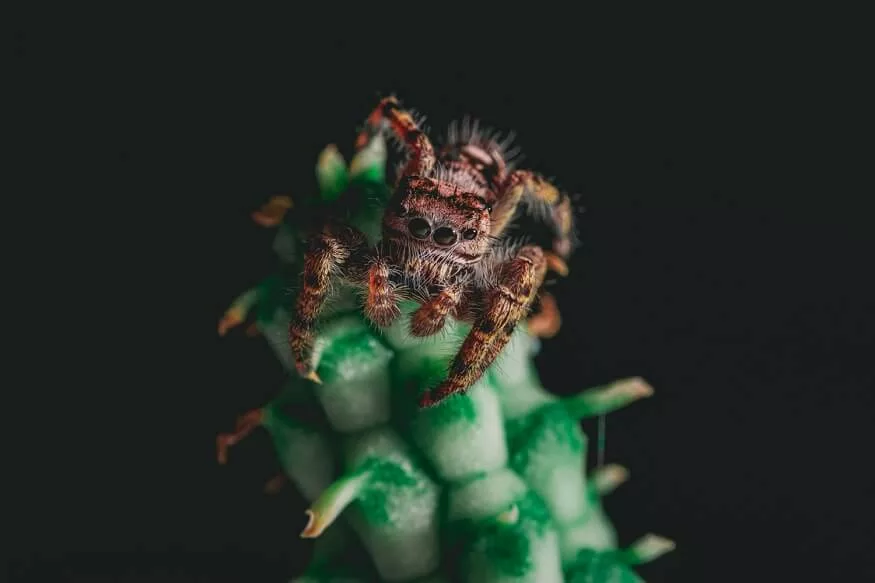In the realm of outdoor adventures, safety invariably takes precedence. Protecting your health must be the main focus of your excursion, whether you’re travelling through dense forests, going on an exciting camping adventure in the outdoors, or just enjoying a leisurely stroll through a peaceful park. The ability to recognise dangerous plants and animals is one of this vigilance’s most important facets. By acquiring the expertise to identify potential threats that Mother Nature may occasionally present, you not only avert perilous encounters but also guarantee an experience steeped in safety and enjoyment. In this comprehensive guide, we shall delve deeply into the art of recognizing poisonous plants and animals, with safety as our watchword throughout.
Recognising Poisonous Plants
1. Prioritise Safety
Before immersing ourselves in the intricate world of identifying poisonous plants, it is imperative to reaffirm the cardinal rule: Safety must remain your unwavering beacon. Regardless of the outdoor setting, ensuring your safety at all times stands as an absolute imperative. By mastering the skills to spot and sidestep poisonous flora, you fundamentally reduce the odds of accidents or injuries that might otherwise mar your adventure.
2. Poison Ivy, Oak, and Sumac
On even the slightest contact, poisonous plants may cause skin irritation or rashes. Poison oak, poison sumac, and poison ivy are three of the most common offenders in this group. These plants contain urushiol, a compound well known for causing allergic reactions in many people.
When it comes to identifying these plants, consider the following:
– Poison ivy typically flaunts three shiny, pointed leaves, clustering together.
– Poison oak bears a striking resemblance to the leaves of an oak tree, featuring three leaflets per stem.
– Poison sumac, on the other hand, distinguishes itself with seven to thirteen leaflets that arrange themselves in pairs.
Safety Tip: In the unfortunate event of contact with any of these plants, mitigate the consequences by thoroughly washing the affected area with soap and water to eliminate urushiol. It’s crucial to resist the urge to scratch, as this can exacerbate the rash.
Also read: Animal Safety for Kids: How to Approach or Avoid Animals
3. Stinging Nettles
Stinging nettles constitute yet another prominent presence among poisonous plants, capable of inducing skin irritation. These nettles sport leaves adorned with minuscule, hair-like structures that discharge a stinging substance when they come into contact with skin.
To identify stinging nettles proficiently, keep an eye out for the following characteristics:
– Leaves are positioned opposite each other along the stem.
– The leaves sport a pointed, serrated edge.
– Both the stem and leaves are enveloped in tiny, hair-like structures.
Safety Tip: Should you unintentionally brush against stinging nettles, alleviate the discomfort by promptly cleansing the affected area with soap and water, and consider applying a soothing lotion.
4. Hemlock
Hemlock, conversely, falls into the category of highly toxic plants, posing a genuine threat to life if ingested. Its deadly arsenal includes coniine, a compound with deleterious effects on the nervous system.
When identifying hemlock, take heed of these distinctive features:
– Hemlock tends to proliferate in clusters, often boasting small, white flowers arranged in umbrella-shaped clusters.
– The leaves exhibit a finely divided, fern-like appearance.
– A distinctive musty odour often lingers in the vicinity of hemlock plants.
Safety Tip: Avoid any form of contact with hemlock and, most crucially, never entertain the idea of ingesting any part of this perilous plant. Should there be even a hint of ingestion, immediate medical attention is non-negotiable.
Also read: Environmental Safety for Kids
Recognising Poisonous Animals
1. Safety Remains Paramount
Much like the precautions associated with plants, safety should invariably take precedence when dealing with potentially poisonous animals. Mastery of the art of recognising these creatures can be a veritable lifeline, helping you steer clear of hazardous encounters.
2. Venomous Snakes
Among the most formidable adversaries in the wilderness, venomous snakes can unleash devastation with a single bite. Hence, it is indispensable to be well-versed in their recognition.
Common venomous snakes include:
– Rattlesnakes, discernible by their signature rattles and the distinctive triangular shape of their heads.
– Copperheads, which bear a telltale copper-coloured head and intricate hourglass-shaped markings on their bodies.
– Cottonmouths, alternatively known as water moccasins, boast a white interior in their mouths and often inhabit semi-aquatic environments.
Safety Tip: When navigating snake-prone territories during hikes or camping excursions, make sure to don appropriate footwear and exercise utmost caution when stepping over rocks or logs. If a snake crosses your path, maintain a safe distance and resist the urge to provoke it.
3. Poisonous Spiders
Though the majority of spiders you might encounter in the wild are innocuous, there exist a few species capable of inflicting painful or even perilous bites. Recognizing these arachnids can make all the difference in avoiding unwelcome confrontations.
Also read: 10 Safety Rules at School You Must Teach Your Children
Prominent poisonous spiders encompass:
– The Black Widow is characterised by its glossy black appearance and the distinctive red hourglass-shaped marking on its abdomen.
– The Brown Recluse typically exhibits shades ranging from light to dark brown, with a violin-shaped mark on its cephalothorax.
Safety Tip: In spider-prone areas, it’s prudent to shake out your clothing, shoes, and bedding to eliminate any potential arachnid inhabitants. Exercise caution when reaching into dark or concealed spaces.
4. Poisonous Insects
Several insects possess the capability to administer painful stings, with certain individuals potentially facing grave risks, particularly if they exhibit allergies.
Recognising poisonous insects encompasses:
– Bees, which generally assume a round, fuzzy appearance, adorned with distinctive yellow and black stripes.
– Wasps, slender insects characterised by vibrant yellow and black coloration.
– Reddish-brown ants called “Fire Ants” are noted for their aggression and inclination to swarm when startled.
Safety Tip: If you happen to be susceptible to insect stings, it is prudent to carry an epinephrine auto-injector (EpiPen) when venturing into the outdoors. Should a sting occur, seek immediate medical attention.
Also read: 10 rules for stranger safety
Conclusion
Never forget that your safety ranks supreme when embarking on any outdoor venture. The proficiency to recognise poisonous plants and animals stands as an indispensable skill set, one that can markedly elevate your safety quotient and transform your outdoor experiences into captivating and secure adventures. By acquainting yourself with the defining characteristics of these potentially hazardous flora and fauna, you systematically reduce the risk of accidents and injuries that might otherwise cast a shadow on your outdoor pursuits. Remember, even a modicum of knowledge can wield profound influence in ensuring that your time spent amid the wonders of nature remains an unalloyed delight while safeguarding you from harm’s way. Hence, always uphold the beacon of safety, maintain unwavering vigilance, and bask in the splendours of nature without ever compromising your well-being.
For more exciting blogs, Visit EuroSchool











